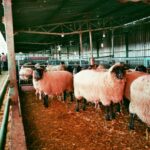Tomatoes are one of the most widely cultivated crops in South Africa, prized for their versatility and profitability. However, successful tomato farming requires precision, knowledge, and proper care. Farmers often make avoidable mistakes that can compromise yield and quality. Understanding these pitfalls is essential to maximize productivity. Here are 10 common mistakes South African tomato farmers should avoid:
1. Choosing the Wrong Tomato Variety
Each tomato variety thrives under specific conditions. A common mistake is planting a variety unsuited to your region’s climate or soil. For example:
- In hot, dry regions, heat-resistant varieties are crucial.
- For humid areas, disease-resistant varieties reduce the risk of fungal infections.
Solution: Consult local agricultural advisors or seed suppliers to select a variety optimized for your area and market demand.
2. Planting in Poorly Prepared Soil
Tomatoes require nutrient-rich, well-drained soil. Planting in compacted or nutrient-deficient soil can lead to stunted growth and poor yields.
Solution: Conduct a soil test before planting to assess pH and nutrient levels. The ideal pH for tomatoes is between 6.0 and 6.8. Add organic matter, like compost, to improve fertility and structure.
3. Overcrowding Plants
Planting tomatoes too close together restricts airflow, increases competition for nutrients, and promotes the spread of diseases like powdery mildew and blight.
Solution: Follow recommended spacing guidelines. For determinate (bush) varieties, space plants about 60 cm apart. For indeterminate (vining) varieties, allow 90–120 cm between plants.
4. Overwatering or Underwatering
Inconsistent watering is a common mistake that leads to problems like blossom-end rot (caused by calcium deficiency) and root rot (due to waterlogging).
Solution: Use drip irrigation to provide consistent moisture. Water deeply but avoid saturating the soil. Monitor rainfall and adjust irrigation accordingly.
5. Ignoring Crop Rotation
Repeatedly planting tomatoes in the same field encourages soil-borne diseases and pests like nematodes and fusarium wilt.
Solution: Practice crop rotation by planting non-solanaceous crops (e.g., beans, maize) in the same area for at least two seasons before returning to tomatoes.
6. Poor Pest and Disease Management
Tomatoes are prone to pests like whiteflies, aphids, and red spider mites, as well as diseases such as early blight and bacterial wilt. Failing to identify and address these issues early can devastate crops.
Solution:
- Implement Integrated Pest Management (IPM) by combining natural predators (e.g., ladybirds for aphids) with targeted pesticide use.
- Inspect crops regularly for signs of infestation or infection.
7. Using Excessive Fertilizers
Over-fertilizing, especially with nitrogen, results in excessive leafy growth at the expense of fruit production.
Solution: Apply fertilizers based on soil test results. Use a balanced fertilizer (e.g., 5:10:10) and focus on potassium and phosphorus during the flowering and fruiting stages.
8. Poor Pruning Practices
Neglecting to prune or over-pruning can reduce yield. Excess foliage shades fruits, while improper pruning weakens the plant.
Solution: Remove suckers (side shoots) that grow between the main stem and branches. Prune only enough to improve airflow and light penetration without stressing the plant.
9. Harvesting Too Early or Too Late
Harvesting at the wrong time reduces the market value and shelf life of tomatoes.
Solution:
- Pick tomatoes when they are firm and fully ripened for the local market.
- For transport over long distances, harvest at the breaker stage (when the fruit starts changing color).
10. Neglecting Post-Harvest Handling
Tomatoes are highly perishable, and poor handling leads to bruising and spoilage.
Solution:
- Use well-ventilated crates for storage and transport.
- Store harvested tomatoes in a cool, shaded area to extend freshness.
- Train workers on careful handling to minimize damage.
Bonus Tips for Success
- Monitor Weather Conditions: Use forecasts to plan irrigation and disease management.
- Invest in Quality Seeds: Avoid low-quality seeds that may have poor germination rates.
- Market Strategically: Research market demand to decide whether to focus on fresh produce, processing tomatoes, or niche varieties like cherry tomatoes.
Tomato farming in South Africa can be highly rewarding, but avoiding these common mistakes is essential to ensure high yields and profitability. By choosing the right variety, maintaining optimal soil conditions, and adopting best practices for pest control, irrigation, and post-harvest handling, farmers can maximize their success. Remember, a proactive approach to learning and improving farming methods is the key to thriving in this competitive industry.
Join 'Farmers Mag' WhatsApp Channel
Get the latest Farming news and tips delivered straight to your WhatsApp
CLICK HERE TO JOIN





